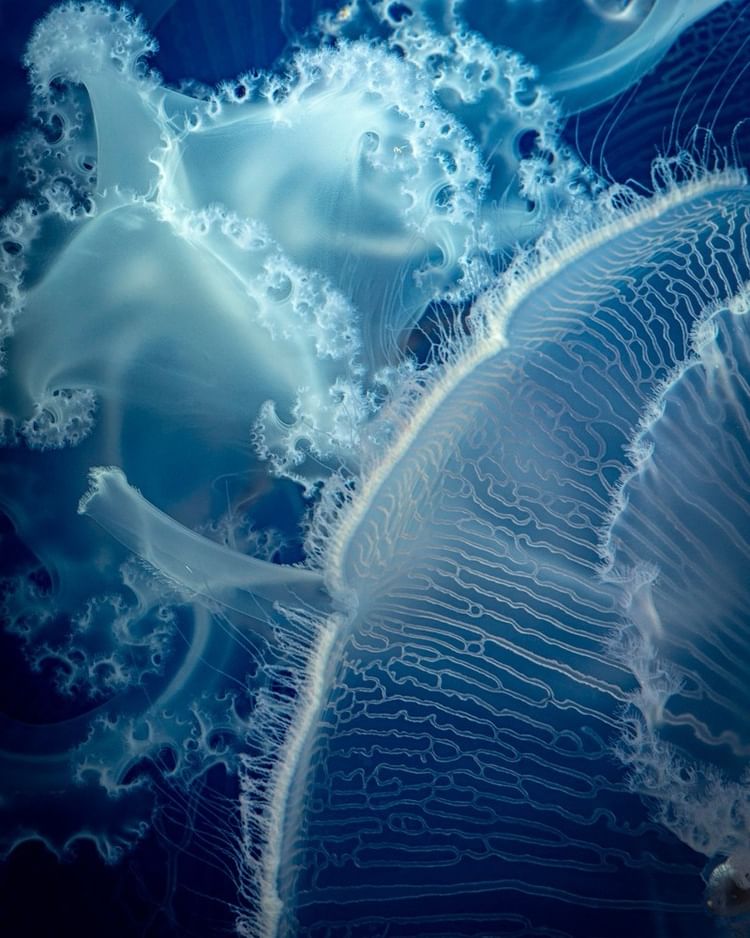Summary:
– Moon jellies are fascinating creatures, despite lacking a brain, bones, or teeth.
– These celestial creatures are known for their graceful movements and mystical appearance.
– Moon jellies also have unique biological characteristics that make them worth studying.
We’re Dancing in the Moonlight! A Celebration of Jellyfish
Jellyfish are some of the most bizarre and mysterious creatures in the world. They are soft, spineless, and gelatinous and come in all shapes, sizes, and colors. Most people associate jellyfish with painful stings and the need for vinegar. But one particular jellyfish stands out for its incredible beauty, the moon jelly.
Moon jellies (Aurelia aurita) are found worldwide in coastal waters, including the Atlantic, Pacific, Arctic, and Mediterranean. They are also found in estuaries and bays and can be seen in warm and cold waters. In many ways, they are a widespread and adaptable species but also a creature of great mystery and wonder.
One of the most fascinating aspects of moon jellies is their appearance. Translucent with a frosted white color and a perfect circle shape, they look like they are straight out of a fairy tale. Their soft, delicate bell has a unique but straightforward pattern consisting of eight radial stripes and tiny dots. And then there are the long, delicate tentacles that trail beneath the bell, like strands of silk in the water.
Moon jellies are most easily spotted at night. They are bioluminescent, which means they can glow in the dark when agitated by something, such as a predator or an object in the water. Combined with the moonlight, the result is a mesmerizing dance of blue light.
But despite their ethereal beauty, moon jellies are pretty challenging and resilient. Unlike most jellyfish, they are not very evil and have a milder sting that is not harmful to humans. They also have a remarkable life cycle that allows them to thrive in different environments and times of the year.
Moon jellies essentially exist in two forms: polyps and medusae. The polyp stage is the stationary, asexual reproduction on the sea floor or rigid substrates. The medusa stage is the familiar floating jellyfish stage.
During the medusa stage, moon jellies feed on tiny organisms like plankton. Their unique feeding system involves sticky mucus on their tentacles, which traps food particles and brings them to their mouth. This system is so efficient that moon jellies can consume up to 20% of their body weight in plankton daily.
But perhaps the most exciting aspect of moon jellies is their lack of traditional anatomy. As previously mentioned, these creatures have no bones, teeth, or brains. Instead, they have a simple nerve net that runs through their body and controls their movement. They also have a statocyst, a tiny organ that helps them sense gravity and orientation in the water.
The absence of a central nervous system and the traditional skeleton is intriguing and challenging to scientists studying moon jellies. They are still not wholly understood or categorized as a species. But their otherworldly beauty and unique biological characteristics make them worth studying and admiring.
In conclusion, moon jellies are a true natural wonder. They are simultaneously calming and mesmerizing to watch. Their ghostly appearance adds to the mystery and magic of the ocean. But beyond their striking visuals, they also offer a fascinating biology lesson. Their adaptable life cycle, efficient feeding system, and unique anatomy make them worth exploring and preserving. So next time you spot a moon jelly, take a moment to appreciate its graceful movements and otherworldly charm. We’re dancing in the moonlight, after all.
*****
Source Description
We’re dancing in the moonlight! 🌙
Dancing beneath the waves, the gentle pulsations of moon jellies create a mystical show. Their translucent round bells and delicate thread-like tentacles float elegantly through the deep blue sea. Even with no brains, bones, or teeth in sight, these celestial creatures are a supernatural delight.


